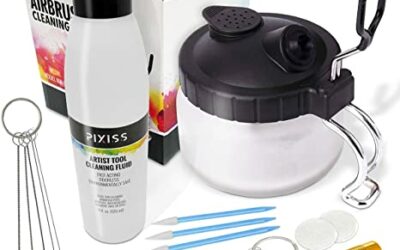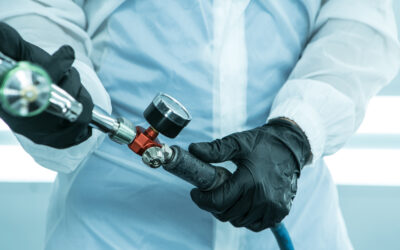How To Thin Acrylic Paint for Airbrushing
How to Thin Acrylic Paint for Airbrushing
Thinning acrylic paint for airbrushing is a little different than thinning other types of paint. Acrylic paints are great for airbrushing because they’re water-soluble and can be thinned with water. In fact, the thinner you want to go, the more water you need to add to the paint.
Acrylic paint is a versatile medium that can be used on just about any surface. However, if you plan on airbrushing with acrylic paint, it’s important to thin the consistency of the paint to the correct viscosity.

How thin is too thin?
There are still a few things to keep in mind. The consistency of your acrylic paint should be like milk—not too thick, not too runny. The easiest way to check this is by putting an amount of the paint on a piece of paper towel or some other disposable surface and letting it dry overnight. If there are still streaks after 24 hours, then you know it’s too thick! As you are adding water to thin acrylic paint for airbrushing, mix thoroughly with a toothpick or stirring tool until all of the clumps have been broken up and there are no visible lumps in the mixture.
You’ll also want to make sure that your paint isn’t too hot when you mix it with water; otherwise, it could separate in the jar and not be usable at all! We also suggest adding water in a 1:1 ratio with your paint. For example, if you have half a cup of acrylic paint, you’ll want to add a half cup of water.
In order to get a smooth, opaque finish in an airbrush, your acrylic paint has to be thin enough so that there isn’t too much “spray” or “spitback”. Thinning your paint removes the pigment load of your paint and allows you to adjust the flowability of your paint. The advantage to painting with thinner paints is that you get a smooth finish by reducing the viscosity of the paint. i.e. making it less “thick”. I prefer using water but there are other ways to do it using mediums such as Liquin, Turpenoid etc… It really depends on what works best for you and your situation.
Thinning acrylic paint or any paint for airbrushing is a must do thing. If it is not done properly any mistakes can be disastrous, but with the right procedure you should be fine. So in the end, there is no magic way to thin paint for airbrush. There are tricks and tools and rules of thumb, but at the end of the day you’re still going to need to just experiment with your paints and see which ones you can achieve best results from. With practice, you’ll find what works for your airbrush, your paints and your project. Enjoy!
USEFUL RESOURCES FOR AIRBRUSHING
Airbrush Nails
Airbrushing nails is a great way to create a flawless manicure that lasts, and when you airbrush nails you can get super creative with your manicure.
Airbrush Flames
Airbrushing flames on cars, motorcycles, shirts, and people is a popular customization for people who want to add some personal flair to their ride or styles. This guide will walk you through all the steps of the process, so that you can be confident in your abilities!
How to Clean Your Airbrush
It is very crucial to properly clean your airbrush and make sure that it stays smoothly functioning and operating. If you are a beginner, then you probably won’t have any idea about how to clean airbrush.
Airbrush for Beginners
For a beginner, it’s not a big deal to master airbrushing. It’s merely a game of determination and practice.
Airbrushing Ideas
Airbrushing IdeasAirbrushing is a great way to add a bit of fun and flair to any project, and these ideas are sure to help you get started. Easily add a bit of extra flair to your t-shirts, nails, makeup, cakes, or tattoos with our airbrushing...
Compressors
Airbrush compressors are the heart of an airbrushing system. They are used to provide a constant flow of air to your airbrush. The air is supplied from an air tank, which is filled with compressed air. Airbrush compressors create a constant, steady flow of air that is needed by your airbrush to produce fine lines and detailed artwork.






